LOCATION: BINGFIELD PARK – SWINGS SET
METHOD OF INVESTIGATING: ILLUSTRATION
Building on the observational experiments from the first two weeks, my focus in this unit has been on studying two sets of swings in a local park. Through my observations, I discovered that the swings are not limited to their conventional use as recreational equipment. Beyond being a play structure, the swings also serve as a place for people to rest, engage in conversations, and even store personal belongings. Moreover, individuals of different age groups adapt their interactions with the swings based on their own needs and the form of the equipment, rather than strictly adhering to societal norms or prescribed behaviors.
In this project, I plan to use drawing as my primary investigative method to visually document and express my findings about how people creatively utilize this space.
The Unconventional Swing Guide: Exploring Creative Uses and Behaviors
Based on the observations from the first two weeks, I focused on two sets of swings in a park. I found that the swings aren’t just for play—they also serve as spots for resting, socializing, and storing items. People of all ages adapt their use of the swings in creative ways, often ignoring conventional norms.
For this project, I’ll primarily use drawing to capture and illustrate these observations.
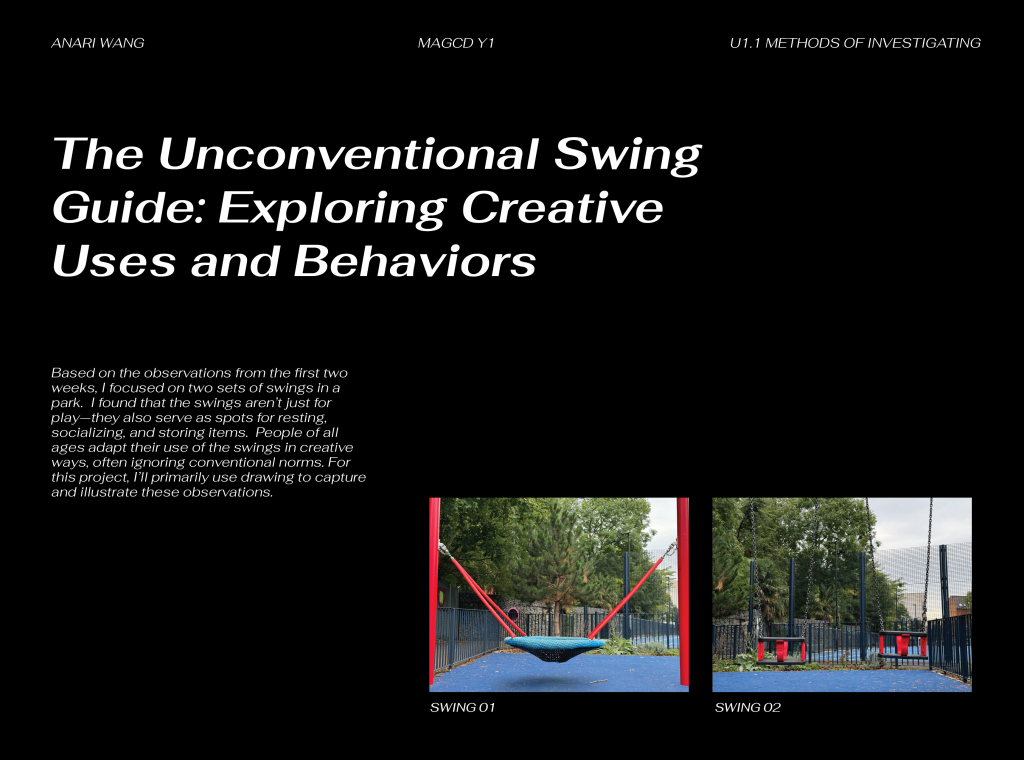
By photographing how people of different ages position their hands and feet while using the swings, I observed that their posture on the swing is heavily influenced by how they engage with it. Some individuals grip the chains tightly, ensuring they won’t fall during play, while others rely on a more relaxed hold, using the chains primarily for balance. This difference in grip and contact points creates varying levels of physical interaction with the swing, depending on the user.
These observations sparked my curiosity about the distinctions in how children and adults use the swings. The photographs captured in this stage will serve as valuable references for my upcoming illustration work, providing insight into the physical dynamics and variations in swing usage.
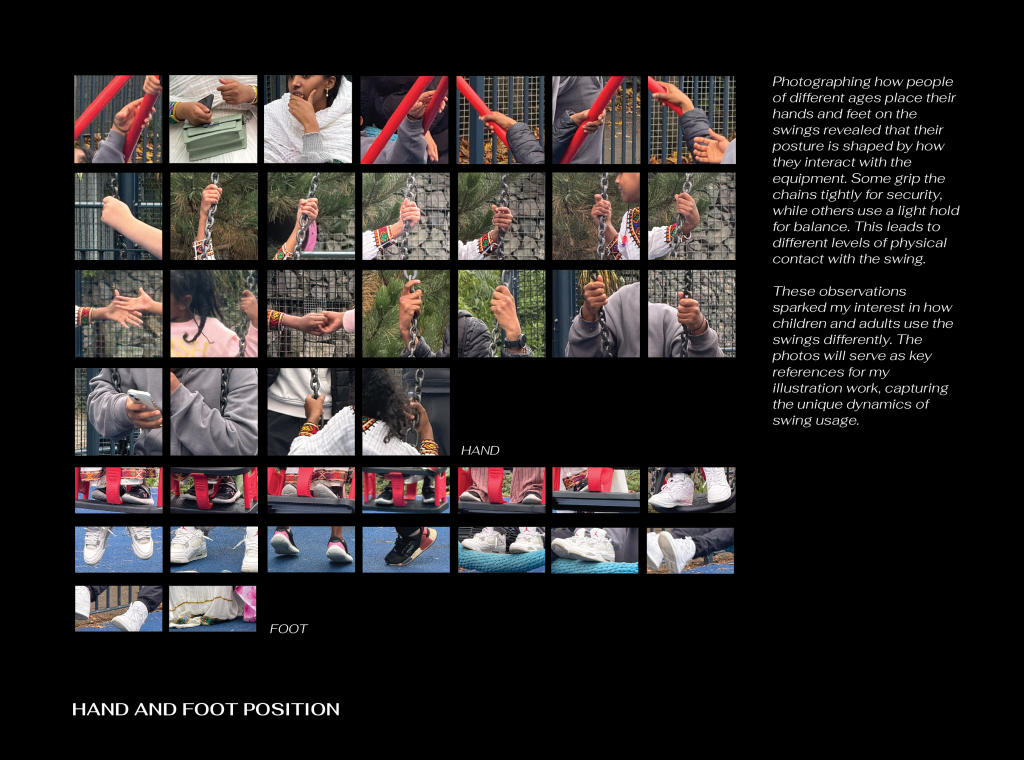
On the left, you can see my detailed illustrations of people’s hands gripping the bars of the large single swing. The way individuals hold the swing varies noticeably, reflecting different approaches to balance and security. Some people hold on tightly, fearing a fall. Interestingly, this behavior isn’t solely divided by age—children may grip the bar firmly out of fear or nervousness, while adults, though more physically confident, may also hold on tightly due to engaging in more daring or dynamic swinging. In both cases, the grip serves as a way to maintain a sense of safety, whether from fear or thrill-seeking.
On the right are my illustrations of the hand details from people using the two smaller single swings. Similar to the large swing, the tension in their grip on the chains varies—some hold tightly while others have a looser grasp. However, one key difference is that children, in particular, seem to prefer having companions join them on the adjacent swing. This often leads to playful interactions, such as the two children in the bottom right of the illustration, who, despite sitting on separate swings, reach out to hold hands.
For adults, the dynamic is different. They tend to lean casually against the chains or use a light grip, primarily for balance, suggesting a more relaxed approach to using the swings compared to children’s more interactive and social play.
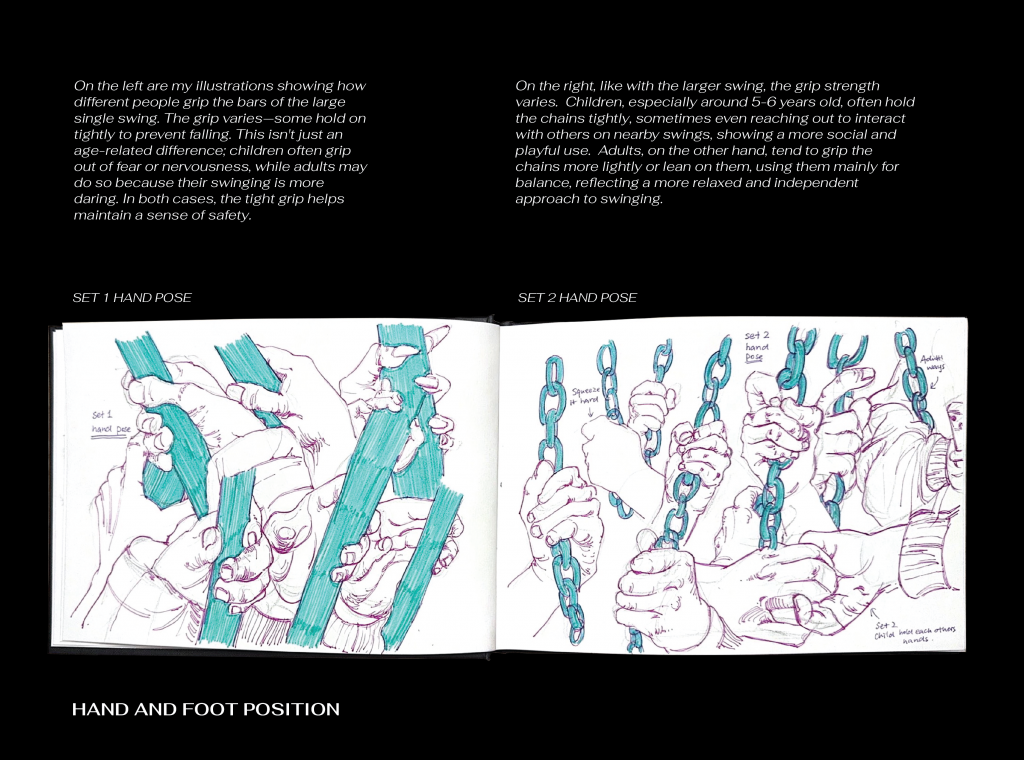
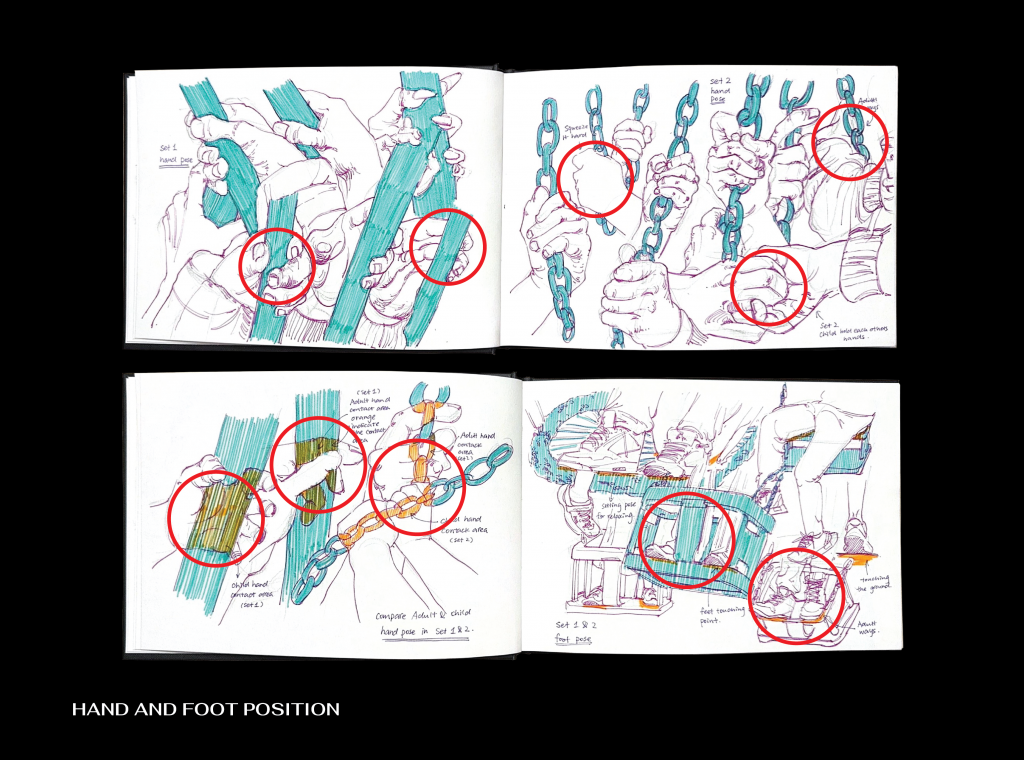
Taking a broader view, we can observe the overall postures people adopt when using the swings. It becomes clear that even when their positions deviate from traditional use, the methods and intentions behind their actions differ. Adults often seek a greater sense of thrill and excitement, using the swings as a way to reconnect with a sense of childhood nostalgia. For them, the swings represent a space free from rules or specific guidelines, allowing for spontaneous play. In contrast, children are more focused on interactive play, using the swings as a way to engage with family and friends. Their primary aim may be to seek attention or share the experience with others, emphasizing the social aspect of play in this setting.
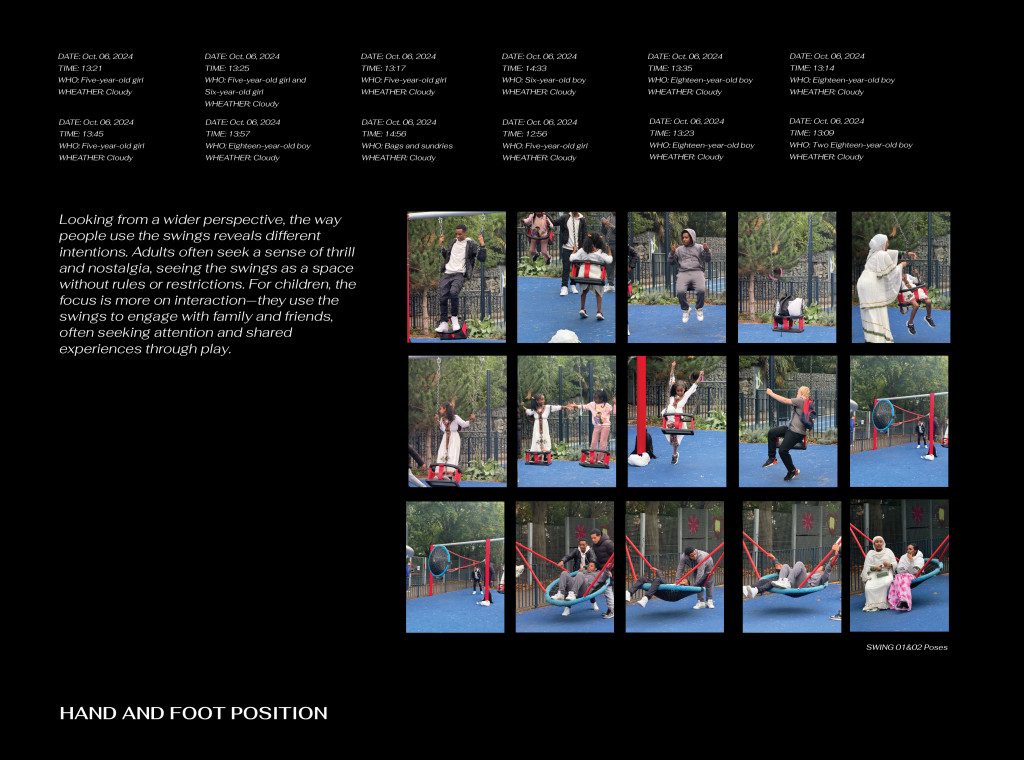
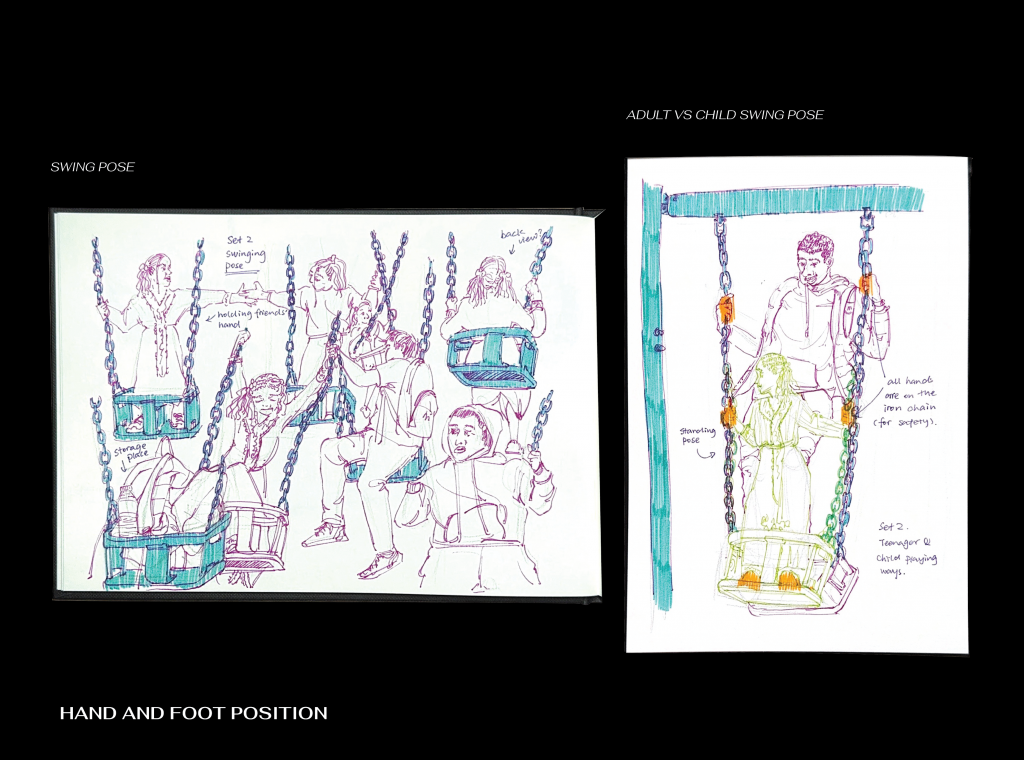
My observations indicate that individual exploration is primarily driven by personal motivation rather than societal norms. This freedom allows users to define their own interactions with the swings, making each experience unique. Children tend to focus on social play with family or peers to strengthen relationships, while adults often seek an escape from existing pressures, viewing the swing space in a more diverse and multifaceted way.
Comments